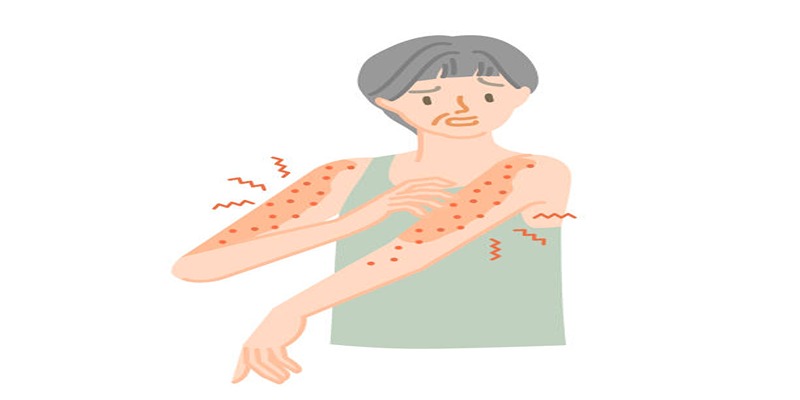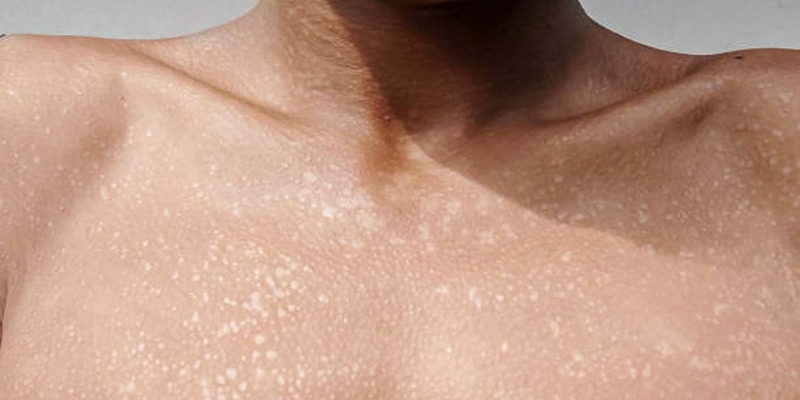Winter rash is a common skin condition that occurs during the colder months, characterized by redness, itching, and dryness. As temperatures drop, the air loses moisture, leading to a decrease in skin hydration and triggering these uncomfortable symptoms. Individuals may experience a worsening of conditions such as eczema or psoriasis, while others, sensitive to environmental changes, also notice an onset of winter rash. Understanding the causes and effective treatment options is crucial for maintaining healthy skin throughout the winter. In addition to treatment, preventive measures play a vital role in mitigating the effects of harsh winter conditions. By adopting a proactive approach, including proper skincare routines and lifestyle adjustments, it is possible to manage and even prevent the discomfort associated with winter rash, allowing for healthier skin year-round.
Common Causes of Winter Rashes
Lack of Humidity
One of the primary contributors to winter rash is the lack of humidity in the air during the colder months. Heating systems in homes and workplaces further decrease humidity levels, intensifying the dryness and irritation experienced by many. Without sufficient moisture in the air, the skin struggles to stay hydrated, leading to common symptoms of winter rash such as flaking and itchiness.
Harsh Winter Winds
Exposure to harsh winter winds can exacerbate skin issues by stripping away the skin's natural oils, crucial for maintaining a protective barrier. This constant exposure leaves the skin vulnerable to cracking and redness. Dressing in protective clothing, like scarves and gloves, can help shield the skin from the elements, reducing the likelihood of developing a winter rash.
Hot Showers and Baths
While a hot shower or bath may seem comforting during the cold months, frequent exposure to hot water can worsen a winter rash by depleting the skin's natural moisture barrier. Instead, it's recommended to opt for lukewarm water and limit the time spent in showers or baths to prevent further irritation.
Wool and Rough Fabrics
Wearing wool or rough fabrics directly against the skin can exacerbate the symptoms of a winter rash. These materials can cause friction and irritation, leading to increased redness and itchiness, particularly in sensitive areas. Opting for soft, breathable fabrics like cotton as a base layer can help minimize irritation and provide a more comfortable option for those prone to skin sensitivity during the winter months.
Dehydration
During the winter, people often drink less water because the thirst response is diminished in cold weather, leading to dehydration. Without adequate internal hydration, the skin can become dry and more susceptible to cracking and discomfort associated with winter rash. Drinking plenty of water throughout the day and consuming water-rich foods can help maintain skin hydration and prevent dryness.
Preventative Measures
Maintain Indoor Humidity
To combat the dry indoor air during winter, consider using a humidifier to maintain optimal humidity levels in your home. This can help prevent skin from losing moisture and alleviate symptoms associated with winter rash. Keeping the air moist not only benefits your skin but also creates a more comfortable living environment.
Choose Skin-Friendly Fabrics
Opt for soft, breathable fabrics when selecting clothing to minimize irritation when your skin is dry and sensitive. Layering with cotton or other gentle materials as a base layer can help reduce friction and prevent exacerbating the symptoms of a winter rash. Avoid wearing wool or coarse fabrics directly against the skin to lessen the risk of irritation.
Hydrate Regularly
Ensure you're drinking plenty of water daily to maintain adequate hydration levels. Keeping your body hydrated internally supports skin health and reduces the risk of it becoming dry and irritated. Incorporate hydrating foods like fruits and vegetables into your diet to naturally boost your fluid intake.
Limit Hot Showers
Reduce the frequency and temperature of your showers to avoid stripping the skin of its natural oils. Lukewarm showers and shorter bathing times are ideal to maintain skin's moisture. Additionally, apply a nourishing moisturizer immediately after bathing to lock in hydration and protect the skin barrier.
Protect Your Skin from the Elements
Before venturing outdoors, apply a protective cream or ointment to exposed skin areas to shield them from harsh winds and cold temperatures. Wearing gloves, hats, and scarves can provide an additional barrier against the elements, reducing the chance of developing or worsening a winter rash.
Effective Home Remedies
Coconut Oil
Coconut oil is a popular remedy for soothing dry, irritated skin due to its natural moisturizing properties. It is rich in fatty acids, which can help lock moisture into the skin and fortify its natural barrier. Simply apply a thin layer of coconut oil to the affected areas, preferably after a shower when your skin is slightly damp, to help maintain hydration throughout the day.
Oatmeal Baths
Oatmeal is renowned for its ability to soothe itchy, inflamed skin, making it an effective home remedy for winter rash. To prepare an oatmeal bath, grind a cup of plain oatmeal into a fine powder and add it to a lukewarm bath. Soak in the bath for 15-20 minutes to help alleviate itching and moisturize the skin. Pat your skin dry gently afterward to avoid stripping away moisture.
Aloe Vera Gel
Aloe vera gel is cherished for its soothing and healing properties, ideal for calming irritated skin. Applying a generous layer of pure aloe vera gel to the affected areas can help reduce redness and provide relief from itching. It is best to use aloe vera gel directly from the plant or opt for a store-bought version that's free from added fragrances or chemicals.
Honey
Honey is a natural humectant, meaning it can draw moisture into the skin and help retain it. Its antibacterial properties also assist in preventing infections on cracked or broken skin due to winter rash. To use honey as a remedy, apply a thin layer to the rash-affected areas, leave it on for about 20 minutes, then rinse off with lukewarm water.
Olive Oil
Olive oil is another effective emollient that can hydrate and nourish dry skin. Rich in vitamins and antioxidants, olive oil can help repair damaged skin and maintain elasticity. Applying a small amount of extra virgin olive oil to the rash-prone areas and covering them with a clean, soft cloth overnight can enhance moisture retention and soothe irritation.
When to See a Dermatologist?

While many cases of winter rash can be managed effectively with home remedies and preventative measures, there are certain situations where it is advisable to consult a dermatologist. If your rash is persistent or worsens despite self-care efforts, professional evaluation may be necessary. Additionally, if you experience severe itchiness, blistering, or open sores that lead to secondary infections, seeking medical advice is essential.
A dermatologist can provide a more accurate diagnosis and recommend targeted treatments, potentially including prescription medications or therapies, to alleviate symptoms and address underlying conditions that may be contributing to the rash.
Conclusion
Winter rash is a common condition that can cause discomfort during the colder months, but with mindful preventative measures and effective home remedies, it can be managed efficiently. By maintaining skin hydration, choosing appropriate skincare products, and protecting the skin from harsh elements, you can significantly reduce the occurrence and severity of winter rash. It's important to be vigilant and attuned to your skin's needs, adjusting your routine as necessary to maintain skin health. However, do not hesitate to seek advice from a dermatologist if symptoms persist or worsen despite your best efforts, as professional guidance can provide personalized solutions to help relieve your skin concerns.







